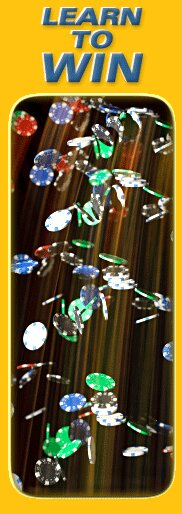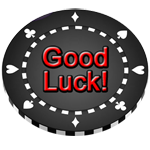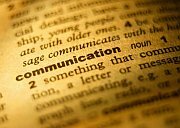Blackjack Strategies & History
by J. Phillip Vogel
This lesson, Blackjack Strategies & History details basic terms, bets and those to avoid at Learn to Play Blackjack program.
As is common with many casino games, the specific origins of blackjack are forever lost to history.
One of the first recoded descriptions of the game places its appearance in France during the 17th century, where it thrilled gamblers under its simple, yet appropriate appellation “vingt-et-un.” Some gaming historians, however, contend that rather than originating in France, vingt-et-un was nothing more that a variation of Spain’s already popular game “One and Thirty” or perhaps even a spin-off of Italy’s Baccarat.
Regardless of its origins, so popular was the game that it quickly emigrated globally, taking on slight changes in both name and rules to suit regional appetites.
In Russia, the game was called “Ochko” (roughly translated as “the hole’). In England, where players were rewarded for drawing both the jack and ace of spades as their first two cards, it became known as “Blackjack.” But whether it’s “21” “California Aces” or even “Ochko” blackjack continues to be one of gambling’s perennial favorites.
Blackjack Strategies: Basics
In its most basic form, blackjack is one of the easiest casino games to learn.
The objective is to attain a hand value that is greater than that of the dealer, yet does not exceed 21.
It can be played using anywhere from one to eight standard decks, with cards of rank 2 through 10 scored according to their face value, while face cards—jack, queen, and king—are valued at 10 points. Aces can be worth either 1 or 11 points.
The game is further governed by the following rules after which blackjack strategies are determined:
- Players win if their hand has a greater total point value than the dealers, without going over 21.
- The best possible hand is called a blackjack and it consists of an ace and any 10-point card. A winning blackjack pays 3:2.
- If both the player and the dealer have a tie, the bet is a tie or “push” and money is neither lost, nor paid.
- All other winning hands pay even money, 1:1.
- If either the player or the dealer exceeds 21 or “bust”, the hand automatically loses.
- If both the dealer and player bust, the player loses.
Every player will then be dealt two cards (both typically face up) while the dealer receives two cards, one of which is exposed and the other (known as the “hole” card) face down.
If the dealer has a ten or an ace exposed, he will check for blackjack, in which case all player hands lose, except another blackjack.
However, should the dealer have an ace exposed, players may take “insurance,” a side-bet that pays 2-1 and hedges the initial bet against a dealer blackjack.
If the dealer does not have blackjack, play continues starting with the player seated immediately to the left of the dealer.
The following blackjack strategies are then available:
Stand. If the player decides their hand is sufficiently strong, they may opt to take no additional action.
Hit. Players may draw additional cards until they either bust or decide the stand.
Double down. If a player’s hand warrants, they may opt to double their current bet and receive one additional card. This option is only offered on the first two cards and in some cases on the first two cards after splitting.
Split. When a player’s first two cards are of equal point value, he may separate them into two hands with each card being the first card of a new hand. To split, the player must make another wager of equal value to the initial wager for the second hand. In cases where another identical point valued card is dealt following the split, re-splitting may be allowed. (Re-splitting aces is often an exception.) When allowed, players may also double down after splitting.
Surrender. In certain versions of blackjack, players may surrender or yield a poor hand on their first two cards, rather than play against a potentially superior hand. Surrendered hands return ½ of the wager to the player.
Once all players have acted, the dealer will then complete his hand. Unlike players, the dealer has no freedom to determine the best course of play and must abide by the house rules that govern all actions. Usually the dealer must hit until his cards reach a total value of 17 or more.
In some casinos or game versions, if a dealer is dealt a soft 17 (an ace plus cards totaling six additional points) he must also hit. If the dealer busts all players active in the hand, win automatically.
Blackjack Strategies to avoid
A lot of new players can be taken in by seemingly sound blackjack strategies that actually have no real place at the tables. Avoid the following dangerously ineffective blackjack strategies.
- Play as the dealer plays. Some people think that because the house has an edge on the game that by playing according to the dealer’s rules (such as always hitting 16 or less, or never doubling or splitting) that same edge will apply. Wrong. Remember, it’s the player who acts first and even if both you and the dealer bust, the house wins the hand. Such strategy results in a house edge of approximately 5.5%
- Martingale System. Some players advocate an age-old, misguided betting system design ostensibly to guarantee winning. Called the “Martingale System,” this method requires players to double their bet for every hand following a loss. The theory is that by doubling the bet you will eventually win a hand and recoup any previous losses. Although it sounds powerful, this system is flawed and ineffective, and fails to take into account high-risk bets, a moderately bad run of cards, and table limits.
- Never draw to a hand that can bust. Rather than take a card that could break the hand, some players prefer to always stand pat on hard totals of 12 or more. Such play is harmful in the long run and results in a vigorish of approximately 4%.
Steer clear of tricks and systems and stick with basic blackjack strategies, the only proven method of minimizing the house’s edge.
Blackjack Strategies is followed by More Strategies
OR
Return to Learn to Play Blackjack Program
Gambling Teachers Home
GT is attentive about getting the word out about our free programs, lessons and add-ons offered, however, we ask your assistance and consideration in promoting us.
Click link below that reads, "Enjoy this page? Please pay it forward. Here's how..." to add a link to your site, blog or personal page.
Tips, Terms & Wins
Blackjack Side Bet: Over/Under
This side bet allows a player to wager that the likelihood of his two initial cards will total either over 13 or under 13 (if the total is exactly 13 the player loses both
the over and under bet).
The house has an edge of 6.6% for the over bet and 10% for the under bet (typical 6 deck game).
This bet is not recommended if you are a basic strategy player.





